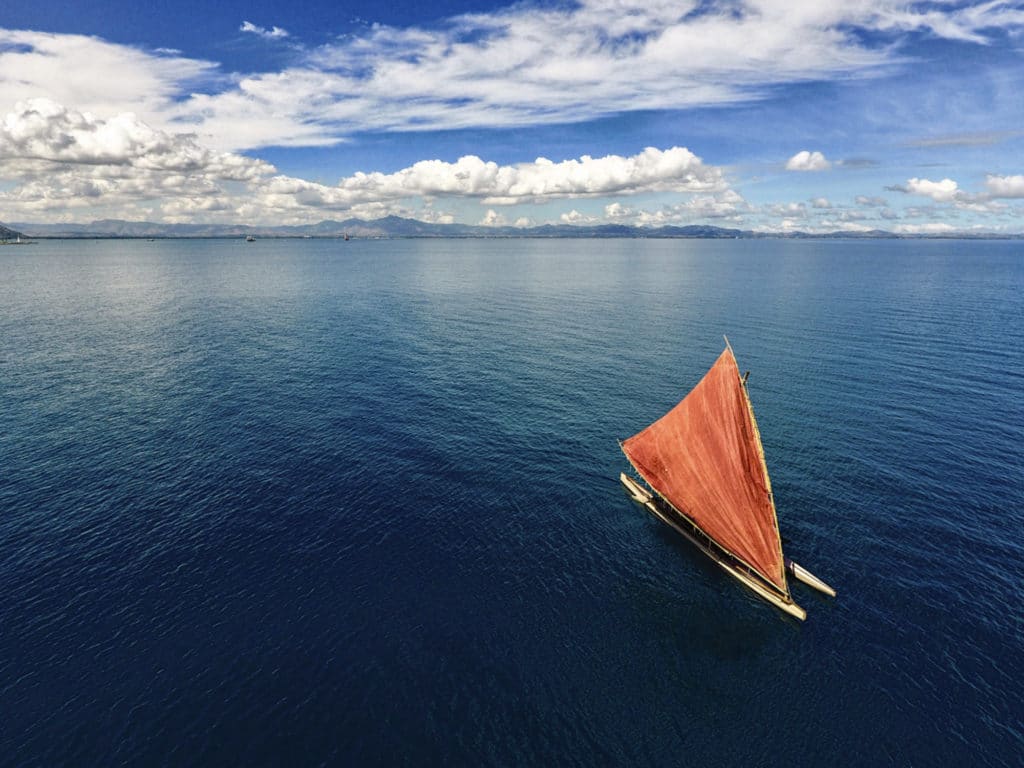
Long before Cruising World magazine, before production fiberglass boats or even square-rigged tall ships, there were a variety of different canoe designs sailing the trade-wind-kissed waters of the Pacific Ocean. Widely recognized as one of the first bluewater fleets in the history of the world, the multihull canoes of the Pacific covered vast expanses of water as pioneering voyagers and nomadic islanders settled everything from volcanic island chains to tiny, geographically disparate coral atolls. Of these many different canoe designs that sailed the Pacific, few were as grand as the mighty Fijian drua.
The drua were revered throughout the Pacific for their incredible size and performance, along with their huge cargo-carrying ability. The largest of them were more than 120 feet long and capable of carrying up to 200 warriors to windward, at speeds of 15 knots.
Around the world, the boats of our ancestors have been replaced by modern craft with engines and composite construction. The boats of Fiji are no different, and the introduction of the combustion engine signaled the death of the drua. Drua were originally built in the Lau group of islands in eastern Fiji—islands revered for their legendary boatbuilders and high-quality timber. The drua left the islands one by one and disappeared over the years. While there are records of when each drua left the Lau group, there’s not a single record of a drua returning to those islands in modern times.
Meet i Vola Sigavou, which translates to “the new rising star.” A drua built using fiberglass and modern building methods, i Vola Sigavou is a reproduction of the lines of Ratu Finau, the last known drua built in the traditional sense back in 1913. Launched in 2016, the 40-foot i Vola Sigavou is based in western Fiji and is part of a nonprofit organization called the Drua Experience. The drua takes tourists and locals sailing as part of an effort to revitalize drua sailing culture and traditional navigation.
RELATED: Canoe Kids in the Solomon Islands
“Because of the COVID-19 pandemic, there are no tourists in Fiji, and we are not expecting any tourists in the foreseeable future,” said i Vola Sigavou skipper Setareki Corvus Ledua, in August 2020. “We thought to ourselves, this could be the perfect time to go out to the Lau group and do more research and collect all of the evidence that still exists.” The ambitious voyage saw the drua sail around most of the main island of Viti Levu before crossing eastward toward the Lau group. The voyage was dubbed na lesu tale voyage, which translates to “the homecoming,” and it marked the first time in modern history that a drua sailed into its ancestral home of the Lau group.
The two-month journey from September to November 2020 saw the drua and its crew of six Fijians sail more than 500 nautical miles around much of the country. Beginning in Fiji’s touristy western division, the crew sailed i Vola Sigavou north and east over the top of Viti Levu, and then waited for proper weather before sailing across the Koro Sea and crossing to the remote Lau group. With more than a dozen stops along the way, the drua’s ultimate destination was Fulaga Island, the captain’s native home and the beating heart of drua culture.
The voyage was part of the Drua Experience’s larger goal of establishing a traditional navigation and canoe-building school in Fiji to reconnect youth with traditional sailing culture, navigation and the ocean itself. The voyage was conceived as a way to revitalize ancient customs and traditions while collecting knowledge from living elders before that knowledge dies out forever.








